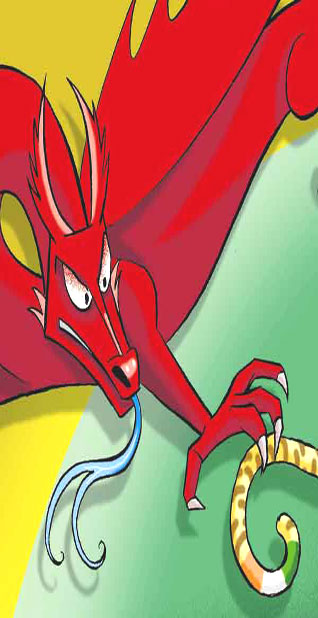Current Events
On Radically Divergent Paths,
Fast-Paced China Is Leaving India Behind
HEATHER TIMMINS & MADHURA KARNIK
When Chinese prime minister Li Peng visited New Delhi in 1991, it was a momentous occasion for the two gigantic, mostly rural, developing countries. Both were adrift and isolated -- India struggling in the aftermath of the Soviet Union’s collapse, and China facing criticism of its human rights record.
Many things about the two countries were practically equal at the time -- their GDP per capita was among the world’s lowest, they attracted a similar (nearly non-existent) amount of foreign direct investment, even the countries’ sanitation situation was equal.
“China, still ostracized internationally because of its human-rights record, and India, stranded by a self-imposed economic isolationism, are struggling to find new partnerships in an emerging global order neither appear to like very much,” the New York Times wrote at the time.
How things have changed between that visit and Indian prime minister Narendra Modi’s touchdown in China this week.
China has developed into a manufacturing and export-led powerhouse that is slated to become the world’s largest economy, perhaps this year.
India, at the same time, became a global outsourcing hotspot, although the benefits of that relatively small industry’s growth have had a much smaller long-term impact, and China’s economy has left India’s far behind.
Now, as then, both countries are the world’s most populous. Here’s a look at how things have changed:
When Li visited in 1991, per capita GDP for the two countries was practically equal. Although India’s economy is said to be growing faster than China’s at this moment, China’s has bested India for decades.
Per capita GDP in China was $6,807.4 in 2013, almost six times India’s.
China’s foreign direct investment, which was about equal with India’s as well in 1991, has far outstripped it in recent years, thanks in part to protectionist policies in India, and China’s higher GDP per capita attracting more consumer goods companies.
Although both countries were heavily agrarian in the 1990s, industry in China has always contributed a lot more to GDP, and that has not changed. Industry here refers to mining, manufacturing, construction, electricity, water, and gas.
China, known for its export-oriented economy saw the share of GDP contributed by exports swell substantially in the mid-2000s. But India has caught up in the last few years, because of the rapid growth in its services sector driven by information technology and financial services.
Helping to contribute to China manufacturing and export boom were a vast improvement on transportation and connectivity in the country. That’s in part because China’s spending on infrastructure is way higher than India’s. On an average China spent 8% of its GDP in in the period from 1992 to 2011, while India only 3.9%.
Back in 1991, India and China together accounted for half the world’s malnourished children. Since then, malnourishment in both countries has dropped but not at the same pace -- India’s rates of child malnutrition are about five times as high as China’s, and still some of the worst in the world.
Three decades ago, about the same percentage of the population in both India and China lacked access to what the World Bank calls “improved sanitation facilities,” defined as flush or compost toilets, or well-built latrines.
But here, too, China has shown marked improvement over India.
One place where both countries have grown similarly fast in the past decade is telecommunications. Thanks to their huge populations, China and India are the top two countries in overall mobile subscribers. India at one point briefly overtook China in mobile subscribers, though China has pulled ahead.
[Courtesy: Quartz. Edited for sikhchic.com]
May 15, 2015



